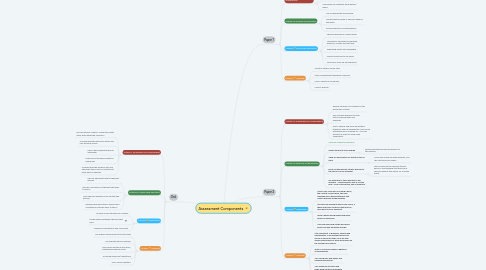
1. Paper 1
1.1. Criterion A: Understanding and Interpretation
1.1.1. Make inferences and deductions
1.1.2. Interpretations based on evidence
1.1.3. Comments are related to the question/ thesis
1.2. Criterion B: Analysis and Evaluation
1.2.1. Use of appropriate terminology
1.2.2. Identify features used or choices made by the writer
1.2.3. Provide support for interpretations
1.3. Criterion C: Focus and Organization
1.3.1. Ideas are planned in a logical order
1.3.2. Introduction identifies the purpose, audience, context and text type
1.3.3. Separating points into paragraphs
1.3.4. Using connectives to link ideas
1.3.5. Conclusion sums up the argument
1.4. Criterion D: Language
1.4.1. Create a suitable formal style
1.4.2. Style is maintained throughout response
1.4.3. Uses a variety of vocabulary
1.4.4. Correct spelling
2. Paper 2
2.1. Criterion A: Knowledge and Understanding
2.1.1. Explore the effect of contexts on the production of texts
2.1.2. Give enough reference to each text including quotes and examples
2.1.3. Aim to analyse and show the author’s intentions and use phrases like: This can be interpreted as or analysed as... It can be assumed in order to avoid value judgements.
2.2. Criterion B: Response to the Question
2.2.1. Carefully unpack the question
2.2.2. Define the points to be argued
2.2.2.1. Write points that are directly relevant to the question
2.2.3. Show an appreciation for the structure of texts.
2.2.3.1. Prose and Drama are quite different, and the structures are unique.
2.2.4. point out the relevant stylistic devices to the points of your argument
2.2.4.1. Stay focused on the relevant stylistic devices. Acknowledge that they are all choices made by the author for a certain effect.
2.2.5. Pay attention to the subtleties of the question … Responding to Why is not like how… How is descriptive, why is analytical.
2.3. Criterion C: Organization
2.3.1. Have a very clear intro including a hook, the context of each work, the main message and a thesis statement that clearly responds to the question.
2.3.2. Structure an argument with a clear focus, a thesis and topic sentences that discuss each point of your argument.
2.3.3. Write a balanced argument with equal points of discussion.
2.3.4. Conclude summing up the discussion points and end the essay strongly
2.4. Criterion D: Language
2.4.1. Stay consistent in grammar, spelling and capitalization. Such mistakes would not secure a mark more than a 3 in any way. Always proofread your work and make sure the mistakes are minimal.
2.4.2. Write in a formal academic register in all assessments.
2.4.3. Vary vocabulary and always use sophisticated diction.
2.4.4. Vary sentence structure and begin each sentence differently
2.4.5. Use linking words and transition phrases: However, Similarly, On the other hand
3. Oral
3.1. Criteria A: Knowledge and Understanding
3.1.1. Discuss work as a whole- connections with other texts within the collection
3.1.2. Consider how the particular extract fits into the work overall
3.1.3. Have a good understanding of authorship
3.1.4. Make use of the whole extract in references
3.1.5. Consider how the evidence not only addresses the GI but is connected to other parts of the text.
3.2. Criterion B: Analysis and Evaluation
3.2.1. Discuss significant lang/ lit features/ devices
3.2.2. Discuss conventions of the text that apply to the GI
3.2.3. Have specific examples from the text and devices
3.2.4. Establish how the author's choices and conventional choices apply to the GI
3.3. Criterion C: Organization
3.3.1. Develop a solid structure for analysis
3.3.2. Create balance between the two texts used
3.3.3. Prepare an introduction and conclusion
3.4. Criterion D: Language
3.4.1. Use specific terminology to the text type
3.4.2. Use sophisticated vocabulary
3.4.3. Have varied sentence structures, integrating evidence fluidly
3.4.4. Avoid redundancies/ repetitions
3.4.5. Use a formal register?
